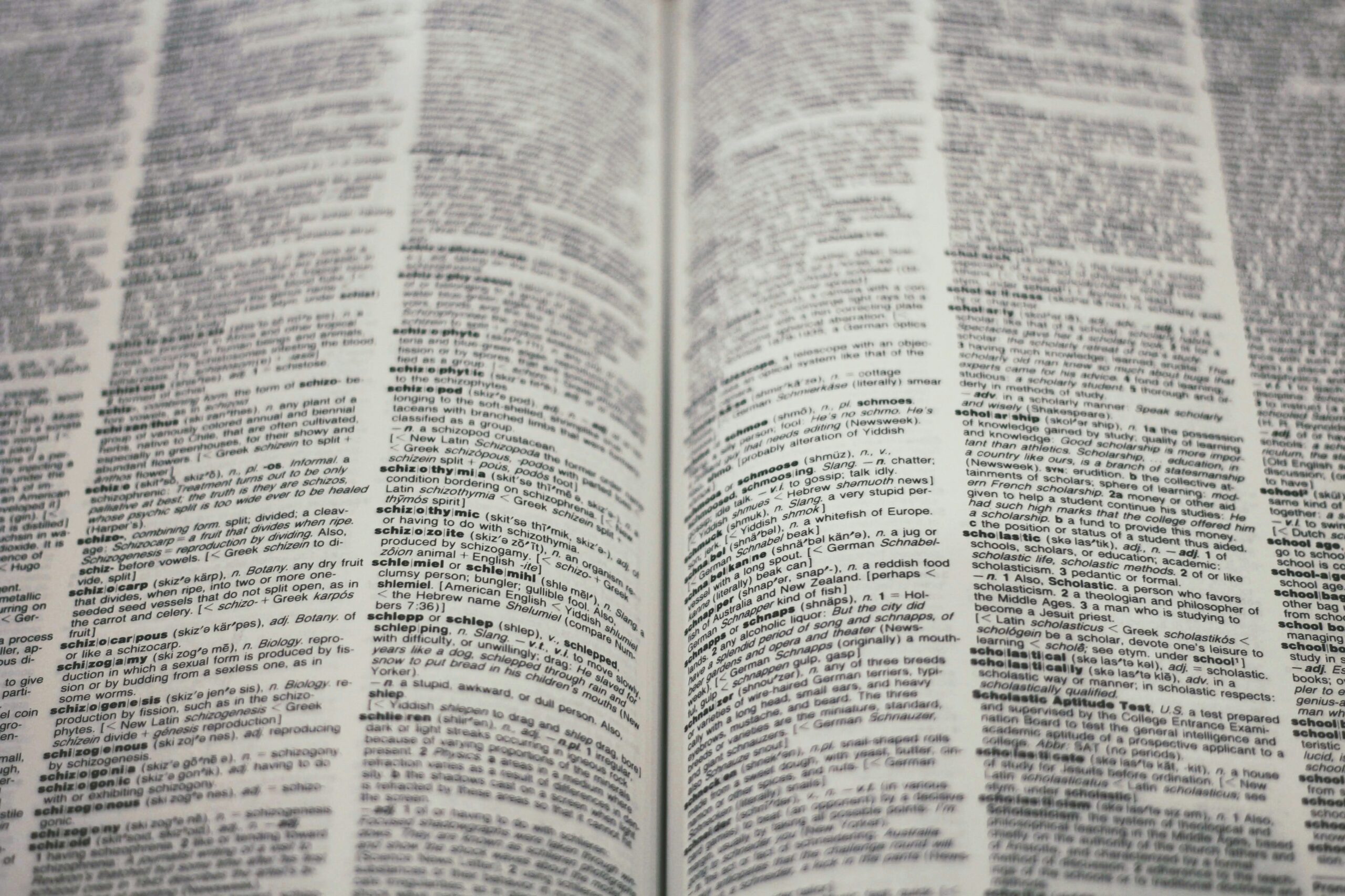Introduction to Rhymes
Rhymes are a fundamental aspect of language that enhance the aesthetics and rhythm of both spoken and written forms. In literature, most notably in poetry, rhyme serves to create a musical quality that captivates readers and listeners alike. By repeating similar sounds at the ends of lines, rhymes establish patterns that can amplify the emotional impact of the text. This importance extends beyond poetry; rhymes are equally significant in music, advertising, and even daily conversation. Through their engaging nature, rhyme words facilitate memorization and retention, thereby making them effective tools in communication.
Understanding the various types of rhymes is essential for anyone looking to appreciate their role in artistic expression. The most common type is perfect rhyme, where the final sounds of the words are identical, such as in “cat” and “hat.” However, there are also near rhymes, where the sounds are similar but not identical, as seen in “worm” and “swarm.” Furthermore, slant rhymes, internal rhymes, and eye rhymes introduce additional layers of complexity, allowing poets and songwriters to experiment with sound and meaning. Each type offers distinct nuances that contribute to a work’s overall effect and helps convey emotions more richly.
As we delve deeper into the exploration of rhyme words, it becomes clear that they are not merely decorative elements; rather, they play an essential role in structuring ideas and enhancing the narrative. By employing rhyme, creators can evoke feelings, establish connections between concepts, and promote engagement with their audience. The rhythmic nature of rhyme invites listeners to immerse themselves in the experience, creating a memorable and impactful interaction with the text or melody. Understanding the mechanics and significance of rhymes lays the groundwork for a more profound appreciation of literature and music.
Definition of Rhyme Words
Rhyme words are defined as pairs of words that have similar ending sounds, particularly in the stressed syllables. This phonetic similarity creates a pleasing auditory experience, often utilized in poetry, songs, and various forms of literature. The essence of rhyme lies in the repetition of sounds, where the final stressed vowel and any subsequent sounds of each word are identical or very similar. For instance, “cat” and “hat” form a simple rhyme, owing to their matching terminal sounds.
Rhyme words can be categorized into various types, such as perfect rhymes, slant rhymes, and eye rhymes. Perfect rhymes maintain an exact correspondence between sounds, as seen in “park” and “bark.” Conversely, slant rhymes, or near rhymes, feature similar but not identical sounds, such as in “shape” and “keep.” Eye rhymes, on the other hand, refer to words that appear similar in spelling but differ when pronounced, such as “bough” and “through.”
The phonetic components that create rhyme words include not only the final vowel sounds but also the consonants that follow them. This aspect of rhyme plays a critical role in determining the quality and musicality of the pairing. For example, the rhyme “close” and “rose” illustrates both vowel and initial consonant connection, contributing to the auditory appeal of the words.
In creating effective rhymes, criteria such as syllable count, stress patterns, and vowel length can influence the effectiveness of rhyme words in a literary piece. By understanding these components, writers can skillfully craft verses that resonate with rhythm and harmony, enriching their work. Ultimately, a firm grasp of rhyme words enhances a writer’s ability to create engaging and memorable content.
Types of Rhymes
Rhyme words are an essential component of poetry and songwriting, creating a musical quality that enhances the emotional and aesthetic appeal of the text. Understanding the types of rhymes can greatly improve one’s writing skills, allowing for a more effective utilization of these linguistic tools. The most common types of rhymes include perfect rhymes, slant rhymes, and eye rhymes.
Perfect rhymes occur when two or more words share the exact ending sounds from the last stressed vowel to the end of the word. For example, the words “cat” and “hat,” or “moon” and “spoon,” are considered perfect rhymes. This type of rhyme offers clarity and a sense of resolution, making it popular in traditional poetry and songs. Perfect rhymes create a harmonious and pleasant auditory effect, often seen in children’s rhymes and nursery songs.
Slant rhymes, also known as near rhymes or half rhymes, involve words that have similar but not identical sounds. For instance, “bridge” and “grudge” illustrate slant rhymes due to their similar ending sounds but differing vowel sounds. This type of rhyme provides a subtler musicality, allowing poets and songwriters to use creative language while maintaining a certain lyrical flow. By employing slant rhymes, writers often achieve emotional depth or complex meanings in their pieces.
Eye rhymes are another interesting form, wherein words appear to rhyme based on their spelling but sound different when pronounced. A classic example is “love” and “move.” Despite their visual similarity, these words do not share similar phonetic endings. Eye rhymes can create unexpected moments in poetry and lyrics, prompting readers or listeners to engage more deeply as they reconsider the sounds versus the spellings of the words used.
Each type of rhyme plays a unique role in enhancing the expressiveness of poetry and lyrics, offering writers a diverse toolkit to convey their messages effectively.
The Role of Rhymes in Poetry
Rhyme plays a significant role in poetry, serving not only to create musicality and rhythm but also to enhance the emotional depth of the work. Poets strategically incorporate rhyme to capture the reader’s attention and evoke particular feelings, leading to a deeper connection with the text. The rhythmic quality that arises from structured rhyme patterns can create a sense of movement and flow, guiding the reader through the poem’s themes and ideas.
In conventional forms of poetry, such as sonnets and ballads, rhyme schemes are essential in establishing the flow and cadence. For example, in a Shakespearean sonnet, the ABABCDCDEFEFGG rhyme scheme contributes to its musical quality while underscoring the volta, or turn, in the poem. Famous poets like Robert Frost and Emily Dickinson also utilized rhyme masterfully, imbuing their works with distinct emotional resonance. Frost’s use of slant rhyme enriches the texture of his poetry, allowing for ambiguity and layered meanings. Dickinson’s unconventional rhyming techniques generate surprise and urgency, compelling readers to explore the emotional undercurrents of her verse.
Moreover, rhyme serves to enhance memorability. The repetition of sounds can make poems easier to memorize and recite, furthering their impact and accessibility. This technique can also contribute to the thematic significance of the work, where the interplay of rhymes can reflect the complexities of the subjects explored. In addition, rhyme can be utilized to create contrast and tension within the poem, drawing attention to a shift in emotion or ideas.
Thus, the role of rhyme in poetry extends beyond mere decoration; it emerges as a vital instrument that deepens the reader’s experience, reinforces themes, and conveys complex emotions. Poets who skillfully wield rhyme enhance their works, crafting pieces that resonate with readers for generations.
Rhymes in Music and Songwriting
Rhyme words play a pivotal role in music, particularly within the realms of songwriting and lyrical composition. The incorporation of rhyme into song lyrics enriches the auditory experience, creating a sense of rhythm and melody that can captivate listeners. This is especially evident in genres such as rap and hip-hop, where intricate rhyme schemes are not merely stylistic choices but fundamental elements of the music’s structure. These genres often employ multisyllabic rhymes, internal rhymes, and assonance, which contribute to a complex and engaging lyrical delivery.
The use of rhyme in songwriting is instrumental for constructing memorable hooks and choruses that resonate with audiences. Artists often craft lines that rhyme in order to create a lyrical cadence, making the lyrics easier to remember and sing along to. A well-placed rhyme sequence can elevate a song, enhancing its overall appeal and ensuring its longevity in popular culture. For instance, many hip-hop tracks feature a signature rhyme style that distinguishes the artist and becomes an integral part of their musical identity.
Moreover, rhyme contributes to the emotional expression in music. It allows songwriters to convey complex ideas and sentiments in a structured yet creative manner. The interplay of rhyme words can advance narratives within lyrics, fostering deeper connections with listeners. By drawing on the musicality of language, artists can evoke particular feelings through clever wordplay and rhythmic patterns.
In conclusion, rhyme serves as an essential component in music and songwriting, particularly in genres that rely heavily on lyrical intricacies, such as rap and hip-hop. The strategic use of rhyme not only enhances the lyrical flow but also creates engaging and memorable musical pieces.
The Science Behind Rhyming
Rhyming is a fascinating phenomenon that intertwines cognitive psychology and linguistics, revealing how humans process and appreciate sounds within language. At its core, rhyme involves the repetition of similar sounds, typically at the ends of words, which creates a musicality that resonates with listeners. This auditory feature serves as an anchor, intensifying memorability and engagement with spoken or written content.
From a psychological perspective, rhymes leverage the brain’s penchant for pattern recognition. When individuals hear words that rhyme, their brains quickly identify and categorize these patterns, leading to increased familiarity. This cognitive process makes rhymes especially effective in language learning and retention. Students exposed to rhymed phrases often find them easier to recall, as the rhythm and melody enhance the encoding of information into long-term memory.
Furthermore, research indicates that rhyming can activate both hemispheres of the brain, resulting in a more dynamic form of processing. The left hemisphere, which is primarily responsible for language, comes into play with the recognition of word structure, while the right hemisphere engages with the musical and emotive aspects of sound. This comprehensive involvement contributes not only to the enjoyable quality of rhymes but also to their utilitarian aspects in education and communication.
The catchy nature of rhymes explains why they are prevalent in children’s literature, educational songs, and advertisements. These repeated sounds create a playful learning environment that not only entertains but also fosters literacy skills. As children learn to recognize and generate rhymes, they develop phonemic awareness and a deeper understanding of language structure, paving the way for clear communication. This natural integration of sounds enhances comprehension and retention, making rhyme a powerful tool in both cognitive development and artistic expression.
Tips for Using Rhymes Effectively
Using rhyme words effectively in poetry and songwriting can enhance the musicality and emotional impact of your work. Here are some practical tips to assist writers and poets in integrating rhyme more seamlessly into their creations.
First, brainstorming rhymes can be an enjoyable process that fuels creativity. Start by considering a core word and listing its potential rhymes. Utilizing tools like rhyming dictionaries or online rhyme generators can be particularly helpful. Engaging in free writing sessions allows for the uninhibited exploration of ideas and encourages unique word pairs that may not have been initially considered.
Maintaining flow is crucial in any piece that incorporates rhyme. Ensure that the rhythm of the verse aligns with the emotional tone and theme. To achieve this, read your work aloud. Listening to the sound can help identify awkward phrasing or disruptive syllables. Consider varying rhyme schemes throughout your piece—alternate rhymes and slant rhymes can add depth and interest, rather than relying solely on perfect rhymes.
Avoiding clichés is essential for effective rhyme usage. Many common phrases have become overused in poetry and music, resulting in predictable and uninspired writing. Strive for originality by seeking fresh imagery or perspectives. This could involve playing with words and meanings to create unexpected associations that enrich your work. Utilizing uncommon or surprising rhyme words can also pique the reader’s interest and keep them engaged.
Finally, balancing creativity and structure is key to successful rhyme integration. While maintaining a rhythm is important, allow room for experimentation. Combining traditional forms with personal styles can yield a unique voice that resonates with audiences. Ultimately, practice and perseverance will lead to a more refined approach to using rhyme in your writing.
Common Mistakes in Rhyme Usage
Writing with rhymes can enrich poetry and songwriting, but it also presents several common pitfalls that writers may encounter. One frequent mistake is the use of forced rhymes, where a writer sacrifices the quality of the content in order to fit a rhyme scheme. For instance, a line may read more awkwardly or lose its intended message simply to achieve a rhyming pair. Writers should prioritize the natural flow of their work, allowing content to dictate the choice of words instead of adhering strictly to a rhyme.
Another significant issue involves mismatched syllables. Effective rhyme requires that words have similar syllable counts, as this maintains the rhythm and cadence of the piece. For example, pairing a two-syllable word like “happy” with a five-syllable word like “incredibly” disrupts the flow and can confuse the reader. To avoid this mistake, writers should carefully consider the syllable structure of their chosen words to ensure harmony throughout the piece.
Additionally, over-reliance on simple rhymes can lead to predictable and uninspired writing. While employing basic rhymes is a helpful starting point, relying solely on them can make the text feel monotonous, drawing attention away from the intended emotion or imagery. For instance, continually using rhymes such as “night” and “light” may diminish the impact of the message. Writers can enhance their work by exploring slant rhymes or incorporating more complex rhymes that maintain interest and creativity.
By recognizing these common mistakes, writers can improve their rhyme usage and create more compelling and engaging works. Careful attention to the quality of their rhymes, syllable matching, and diversity in rhyme choice will lead to a richer literary experience.
Conclusion: Celebrating the Art of Rhyme
In exploring rhymes, we have delved into the fundamental aspects of rhyme words and their functionality within language, art, and culture. Rhyme words serve as an essential component of poetic structure, enhancing the lyrical quality of written and spoken language. The intricate patterns created by rhymes allow for a melody that captures the attention of listeners and readers alike, fostering an emotional connection to the words expressed.
Throughout this discussion, we have seen how rhyme contributes not only to the aesthetic appeal of poetry but also to its mnemonic power. When words resonate harmoniously, they become easier to remember, facilitating the transmission of ideas and cultural narratives across generations. Rhyme has the remarkable ability to bridge the gap between complex themes and accessible language, making profound messages resonate with a wider audience.
Moreover, the exploration of rhyme extends beyond poetry into various forms of artistic expression, including nursery rhymes, songs, and even storytelling. This versatility underscores the timeless relevance of rhymes in our everyday lives. By embracing rhyme, we celebrate a linguistic tradition that promotes creativity and innovation while honoring our cultural heritage.
As we conclude this exploration of rhyme words, we encourage readers to engage with this art form more deeply. Whether through penning a poem, writing lyrics, or simply appreciating the rhyming structures in literature and music, there is much to be gained from experimentation. The beauty of rhyme lies in its capacity to inspire, evoke emotions, and unite us in shared experiences. Therefore, embrace the world of rhyme and allow your creativity to flourish.









